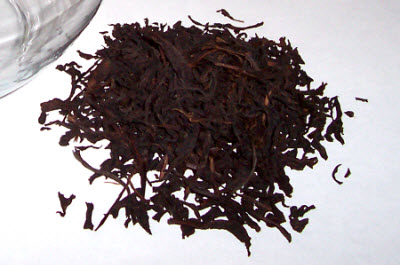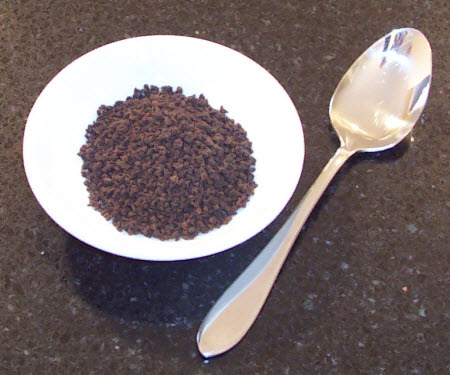As if there isn’t enough to argue about, the debate over which is better – Orthodox tea or CTC tea – is heating up in certain parts of the tea world. It has some tea drinkers scratching their heads, wondering what each of these tea types is and what is the real difference in quality and taste. Time to clear things up a bit.
How They Are Different and Why It Matters
Generally, CTC steeps stronger and has more of a tendency to be bitter, while Orthodox teas are higher quality, less likely to be bitter, and contain more subtle and multi-layered flavors than CTC teas. Knowing which tea you are buying will help you know what results you will get in the cup! If you are planning to make some Masala Chai (spiced tea), definitely start with a CTC tea. However, if you drink your black tea straight or with just some sweetener or lemon, then start with an Orthodox tea.
Basics of Orthodox Tea
Orthodox teas are usually harvested and processed by hand to get intact, whole leaves – small, young tea leaves plucked from the tips of the tea bush – but may also be harvested and processed by machine.
Basic processing of Orthodox teas (some processors may vary these steps):
Withering – Leaves are spread out on long metal troughs in a shaded area for about 14-20 hours, moisture evaporates from them, and they become limp and pliable, allowing them to be rolled without damage.
Rolling – Rollers press the leaves while rotating the leaves around to release chemicals stored in their cells. Begins the oxidation process. Done by hand for highest grades and machine for lower grades (usually large-scale production).
Oxidation – Leaves laid out 2-4 hours in humidity/temperature-controlled room; the air reacts with chemicals released during rolling and turns leaves to reddish-brown, then black. If oxidized too long, the tea will be strong and lose its subtlety. If too short, the complex flavors will not fully develop.
Firing – The leaves move on a conveyor belt through a charcoal fire heater, halting oxidation and drying them, at around 220-250˚ F for 20-40 minutes and then are sorted by leaf grade by a machine that shakes them over varying gauges of mesh that sifts by size. The largest pieces may be hand-sorted to assure consistent size and therefore steeping time. Young, whole leaf teas are generally higher priced than the broken leaf grade.
Grades of Orthodox teas:
Golden Tip – Highest grade comprised of mainly the best quality tips from the stems of the tea bush (Camellia Sinensis).
FTGFOP 1 (Finest Tippy Golden Flowery Orange Pekoe First Grade) – The finest top-grade production with an abundance of tips.
TGFOP 1 (Tippy Golden Flowery Orange Pekoe First Grade) and TGFOP (Tippy Golden Flowery Orange Pekoe) – The main grades of fine quality teas.
FTGBOP (Fancy Tippy Golden Broken Orange Pekoe) – A step down from the above grades.
There are lower grades, too, starting with “OP.” The main part of the above grades is the “GFOP” and “GBOP” where the second letter in each is the key. Full leaf (“F”) versus broken leaf (“B”) can make a difference, with the latter releasing more tannin into the liquid and therefore more likely to be bitter. If you are sensitive to tannin, spend a bit extra for the GFOP Orthodox tea. You may not always see the word “Orthodox” on the tea label, but if you see one of the above grade labels, it will most likely be an Orthodox tea.
CTC Tea
Basically, CTC is machine processed and fully oxidized (black) tea. CTC tea tends to be less expensive and lesser quality than Orthodox tea. CTC teas tend to be blends of tea leaves harvested from more than one plantation during the first “flush” (harvest). This makes their flavor fairly consistent from one batch to another. However, if the tea at the start of the process is good quality, the CTC tea at the end of the process will be good quality.
Assam tea is a common type of tea seen labeled “CTC”. It steeps up an deep ruby-colored liquid with a rich malty flavor tending toward the bitter side. It takes milk well and can usually use a bit of sugar or other sweetener, too, serving as a great tea to use in masala chai (spiced tea).
There is some conflict, though, on what “CTC” stands for, with these being the definitions seen most online:
Cut, Tear, Curl
Cut, Tear, Crush
Curl, Tear, Crush
Crush, Tear, Curl
Crush, Curl, Twined (yes, the words are in a different order than the acronym)
Number 2 seems the most appropriate, but number 4 is most common. Crushing, cutting, and tearing are all part of the processing of this type of tea. Curling doesn’t seem to be, though. These teas tend to look like tiny nuggets, similar to Grape Nuts (which contains no grapes and no nuts, just double-toasted bread crumbs). By the way, most black tea bags are CTC blends ground to fannings or dust.
Now you know, so you can decide which type you like and get just the taste you want. Enjoy!


